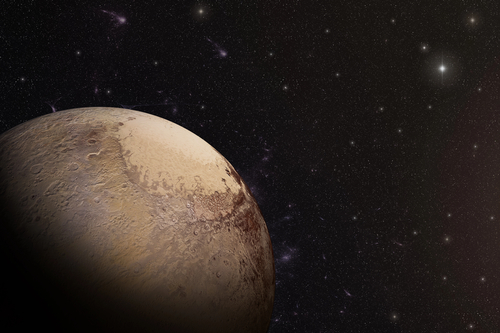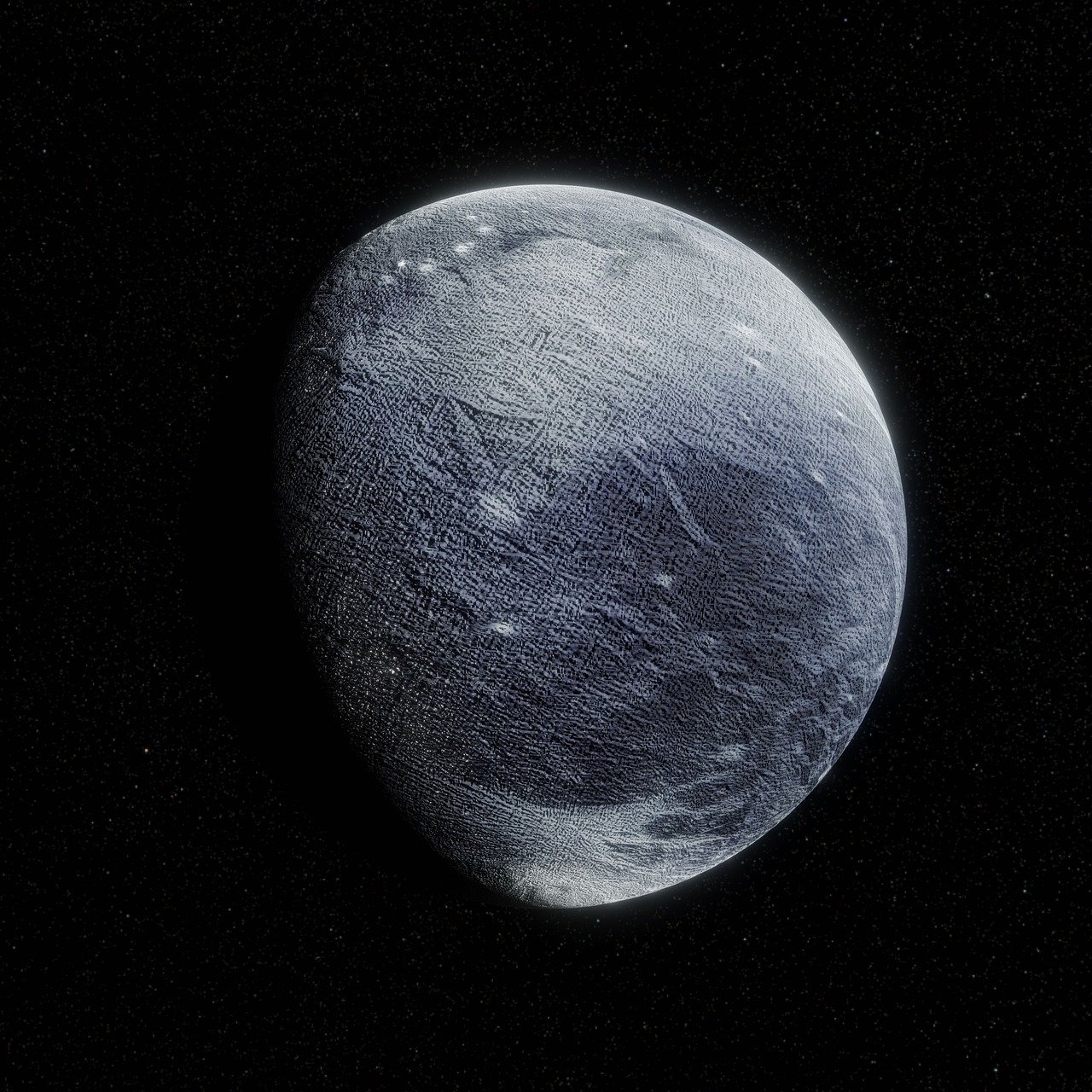
Beneath the icy surface of the distant dwarf planet Pluto, a vast ocean likely exists, and new studies suggest that this subsurface sea may be surprisingly dense and salty, a veritable alien “Dead Sea.”

Researchers have used a combination of mathematical modeling and data from NASA’s historic New Horizons mission to reach these startling conclusions.

Planetary scientists had long dismissed the possibility of an ocean on Pluto, given its frigid surface temperatures—minus 220 degrees Celsius—and its small size, which implied that it would have lost its heat long ago. “Pluto is a small body,” remarked Alex Nguyen, a Ph.D. student at Washington University in St. Louis. “It should have lost almost all of its heat shortly after it was formed, so basic calculations would suggest that it’s frozen solid to its core.”

However, recent evidence, including observations of cryovolcanoes spewing ice and water vapor, has led to a consensus that Pluto indeed cradles an ocean beneath its frozen exterior.

The New Horizons spacecraft, which passed by Pluto in 2015, provided high-resolution images that have been crucial for scientists piecing together this puzzle.

Nguyen, alongside Dr. Patrick McGovern of the Lunar and Planetary Institute, developed models to explain the strange features on Pluto’s icy shell, such as the cracks and bulges observed over the Sputnik Platina basin—an area impacted by a meteor billions of years ago.

These models suggest that the ocean lies beneath a 40 to 80 km thick water ice shell, which may act as an insulating blanket against the freezing cold of space.

Fascinatingly, the team has estimated the density of Pluto’s ocean to be approximately 8% denser than Earth’s seawater, akin to the salinity found in Utah’s Great Salt Lake.

Such salinity levels are consistent with the number of surface fractures—too few for a significantly denser ocean and too many for a less dense one. “This level of density would explain the abundance of fractures seen on the surface,” Nguyen stated.

The study also resolves the mystery of Pluto’s apparent expansion rather than contraction. A completely frozen ocean would have led to a global shrinking effect, which isn’t evident on Pluto’s surface.

Noah Hammond, a graduate student from Brown’s Department of Earth, Environmental and Planetary Sciences, explained, “A subsurface ocean that was slowly freezing over would cause this kind of expansion.”

This revelation not only reshapes our understanding of Pluto but also raises intriguing possibilities about the outer solar system. “The possibility that you could have vast liquid water ocean habitats so far from the sun on Pluto—and that the same could also be possible on other Kuiper belt objects as well—is absolutely incredible,” said Hammond, suggesting that these distant worlds might be more dynamic and complex than previously imagined.

Despite these findings, space agencies have no immediate plans to revisit Pluto, leaving many of its secrets to future generations. Yet, the allure of its hidden ocean and its potential implications for astrobiology continue to captivate scientists and enthusiasts alike.

Pluto’s status as a planet has been a contentious topic since its demotion to a dwarf planet in 2006, following the discovery of other similar-sized objects in its neighborhood, the Kuiper Belt. Its complex and diverse surface features, as revealed by New Horizons, have only fueled the debate and fascination.

While the salinity and presence of Pluto’s subsurface ocean are revelations in planetary science, their implications stretch far beyond. They suggest that even in the cold, remote reaches of our solar system, worlds like Pluto might harbor the conditions necessary for extraordinary forms of existence—a tantalizing thought for those who gaze at the stars and wonder what lies beyond our own planet Earth.
Relevant articles:
– Pluto’s Subsurface Ocean is 8% Denser than Seawater on Earth, Study Suggests, sci.news
– Peering into Pluto’s ocean, EurekAlert!
– Present-day subsurface ocean on Pluto?, ScienceDaily
– Pluto — Everything you need to know about the dwarf planet, space.com

